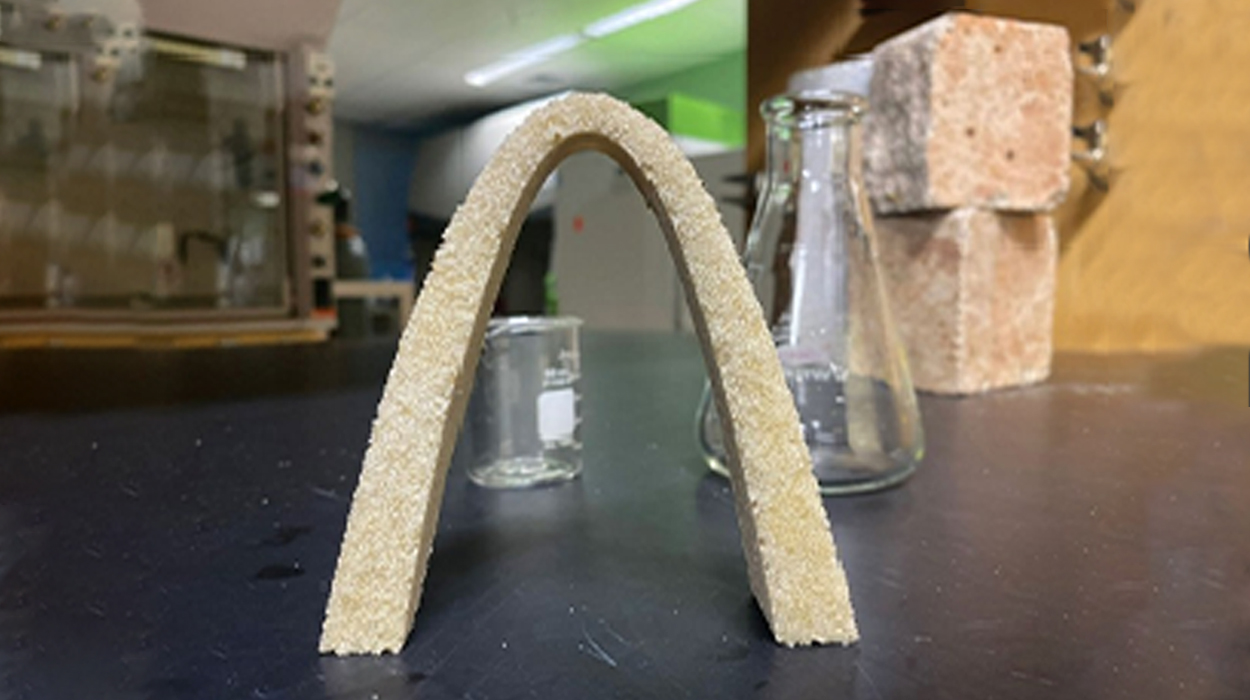Forged with the help of enzymes, a new alternative to concrete pulls in carbon dioxide instead of releasing it (Matter 2022, DOI: 10.1016/j.matt.2021.12.020). The relatively strong material has self-healing properties and hardens in 24 h—much faster than traditional concrete, which takes nearly a month.
Concrete production releases about 9% of global human-made carbon dioxide emissions, according to Nima Rahbar, a materials scientist at Worcester Polytechnic Institute. Making the stuff requires a lot of energy. “In a nutshell, concrete needs to be replaced,” he says.
Rahbar and colleagues have created a stand-in for concrete that could be more sustainable. They combine sand and gelatin, chosen for its low cost, and add a solution containing calcium and a small amount of the enzyme carbonic anhydrase. They then heat molded blocks of the mixture at 100 °C for 24 h.
While the bricks bake, the gelatin forms a polymer scaffold within the material. The enzyme converts CO2 from the surrounding air to aqueous bicarbonate. That bicarbonate and calcium form calcite precipitates on the polymer support network, and the calcite crystals contribute to the material’s strength by building bridges between sand particles. The enzymatic material exceeds the strength requirement for commercial cement mortar.
The work is a neat proof of concept, says Ian M. Power, an environmental geochemist at Trent University who was not involved in the study. But Power points out that the enzyme breaks down over time, so cracks require a treatment of fresh enzyme solution to heal. He also wonders about the cost and feasibility of scaling up production.
Rahbar’s team estimates that an enzymatic material would cost 10–15% more than traditional concrete. And Rahbar expects the cost to decrease with scale-up. For now, he envisions the material being used in nonstructural parts of buildings, such as some walls and basement slabs, but the team is working to make it strong enough for load-bearing applications.
It will take a lot of time and testing for the construction industry to adopt such a material, says Markus J. Buehler, a materials scientist at the Massachusetts Institute of Technology who was not part of the work. But this new take on an old material is refreshing, he says.
carbon-negative concrete, concrete recycling, enzymatic corrosion inhibitor, GCCA, Innovandi Open Challenge

